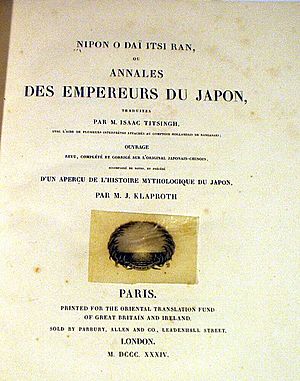Keian facts for kids
Keian (慶安) was a special name for a period of time in Japan. It's like how we have years, but in old Japan, they also had "era names" called nengō. The Keian era came after the Shōhō era and before the Jōō era. This time period lasted from February 1648 to September 1652. During the Keian era, the emperor of Japan was Go-Kōmyō.
What Happened During the Keian Era?
The Keian era was a time of important events in Japan. Here are some of the things that took place:
- 1648 (Keian 1): New rules were made for people living and working in the big city of Osaka. These rules helped organize city life and business.
- 1649 (Keian 2): A tall, five-story pagoda was built at a famous temple called Sensō-ji (金龍山浅草寺, Kinryū-zan Sensō-ji) in Asakusa. A pagoda is a special tower often found at temples.
- 1649 (Keian 2): The leader of Japan, Tokugawa Iemitsu, created new rules for farmers. These rules helped manage how farmers lived and worked.
- 1651 (Keian 4): There was a plan to try and take power from the Tokugawa government. This event is known as the Keian Uprising.
- 1652 (Keian 5): A very important book called Nihon Odai Ichiran was published. This book was about the history of Japan. Later, a French version of this book became the first Japanese history book to be printed in Western countries.
Related Information
- Edo period
- National Diet Library, "The Japanese Calendar" -- historical overview plus illustrative images from library's collection

All content from Kiddle encyclopedia articles (including the article images and facts) can be freely used under Attribution-ShareAlike license, unless stated otherwise. Cite this article:
Keian Facts for Kids. Kiddle Encyclopedia.

